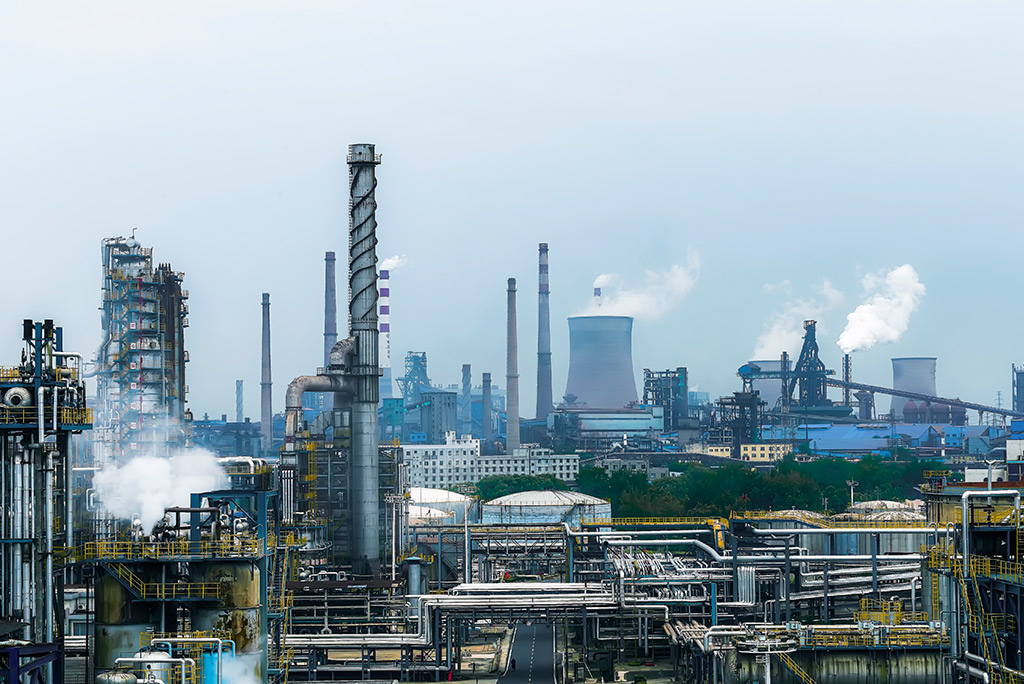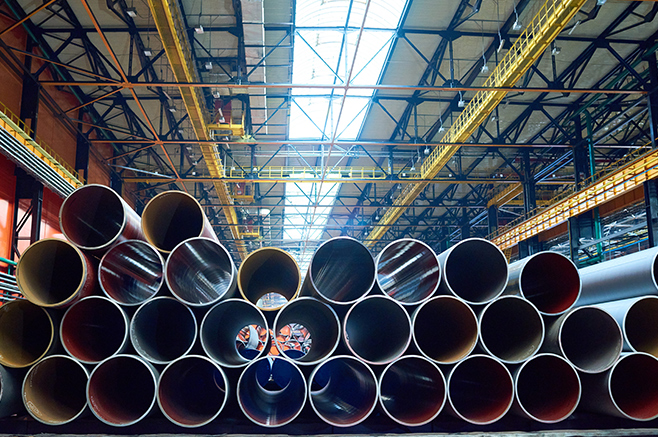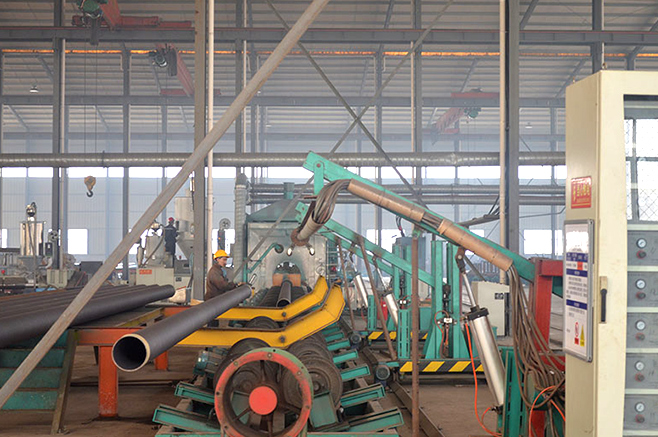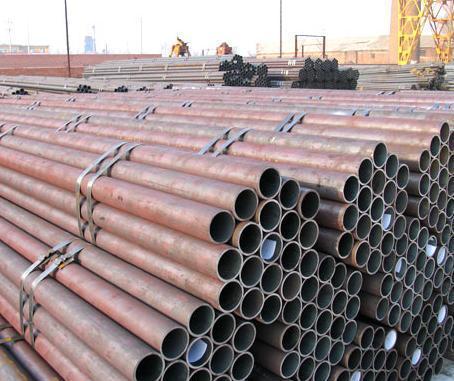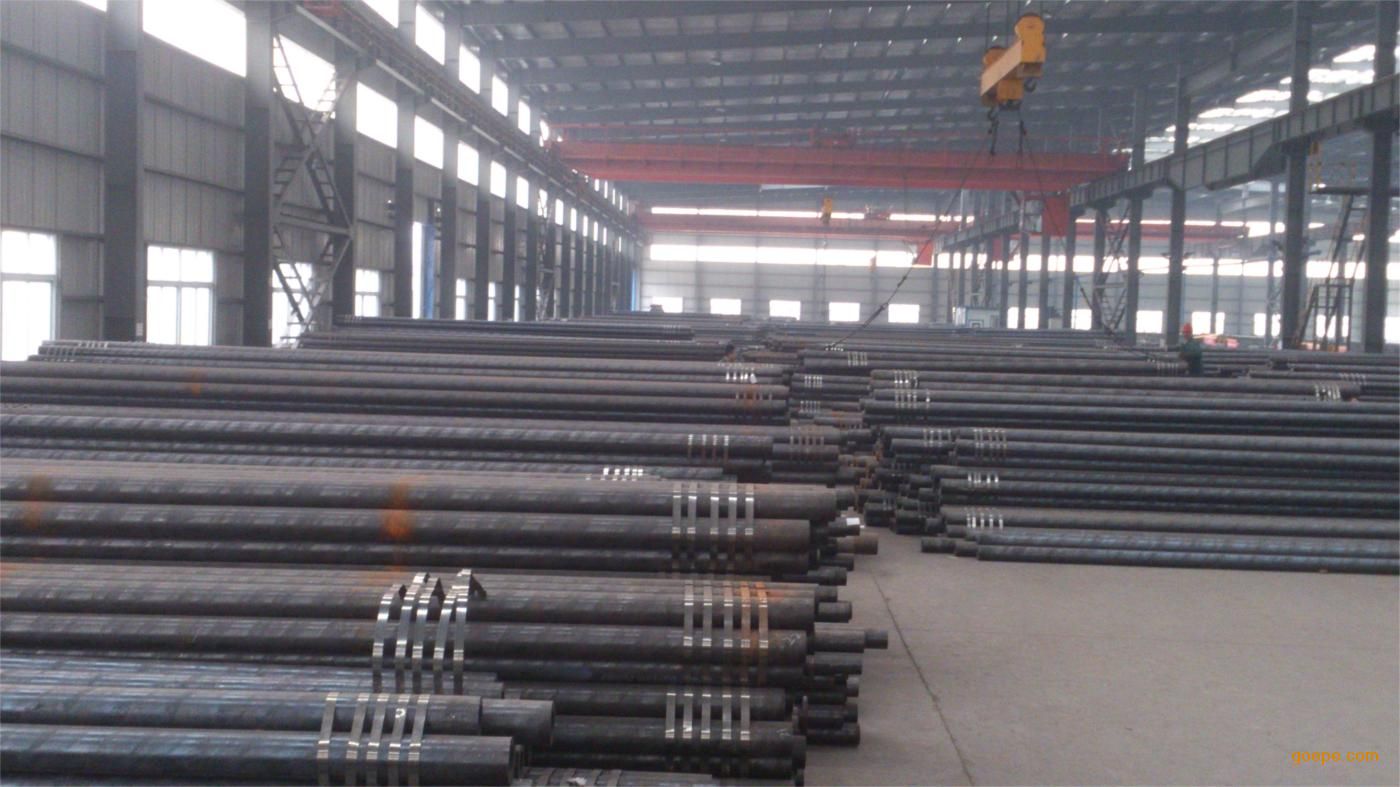|
Seamless steel pipe is a tubular section or hollow cylinder, usually but not necessarily of circular cross-section, used mainly to convey substances which can flow — liquids and gases (fluids), slurries, powders and masses of small solids. We can makes and markets cold-drawn and hot rolled seamless steel pipes and cold-drawn special-section seamless pipes which are widely applied in the industries of petrochemical, boiler, automobile, mechanical, construction. Seamless pipes are extensively applied for the nuclear device, gas, petrochemical, ship building and boiler industries. A Seamless steel pipe can be made from any of several alloys and metals such as carbon steel, stainless steel, molybdenum or tungsten. Some of the differences between Seamless steel pipes and welded tubes are: A Seamless steel pipe is extruded and drawn from a billet whereas a welded tube is produced from a strip that is roll formed and welded to produce a tube. Since a Seamless steel pipe offers a higher range of safety measures it is more expensive than a welded tube. A Seamless steel pipe is relatively short in length, whereas welded tubes can be manufactured in long continuous lengths. A Seamless steel pipe generally doesn't show any sign of corrosion until and unless it is subjected to a highly corrosive environment, whereas the weld area in the welded tube is much more prone to corrosion attacks. A welded area is considered to be inhomogeneous, thus it exhibits a different malleability and less corrosion resistance as well as greater dimensional variation. A Seamless steel pipe eliminates any such issues and thus offers high corrosion resistance. Characteristics Seamless steel pipe for the use of engineering and construction is very widely, it is a hollow steel strip no seams, it is mainly used to transport liquids pipelines, different look and general steel,one of those heavy type steel, it has a strong resistance to corrosion, resistant to general corrosion. high precision can do small batch production. smaller diameter. weldability strong, high compression capability. steel pipe superior performance, relatively dense metal. Steel Cross area is more complex. high precision cold drawn products, good surface quality. Mechanical properties: The mechanical properties of the seamless steel tube is a important indicator that ensure seamless pipe end-use properties (mechanical properties), which depends on the chemical composition and heat treatment of steel. In steel standards, according to different requirements, it provide the tensile properties (tensile strength, yield strength or yield point elongation) and hardness. ① Tensile strength (σb) During stretching, when pull off the bear most strongly (Fb), divided by the original cross-sectional area (So) from the stress (σ), known as the tensile strength (σb), units of N/mm2 (MPa). It said the maximum capacity resist destruction of metallic materials under tension. ② Yield point (σs) Yield the phenomenon of metal materials, the sample does not increase during the tensile force (remains constant) and continue elongation stress is known as the yield point. If the force drop occurred, you should distinguish between upper and lower yield point. The yield point of the unit is in N/mm2 (MPa). On yield point (σsu):Sample to yield the maximum stress and force the first drop; lower yield point (σsl): yield minimum stress in the stage when excluding the initial transient effect. ③ Elongation (σ) In the tensile test, the specimen fractured a percentage of the gauge to increase the length of the original gauge length, called elongation. Σ, said the unit is%. (4) Cross-section contraction rate (ψ) In the tensile test, the percentage of the specimen fractured its shrink the diameter at the cross-sectional area of the maximum reduction and the original cross-sectional area is known as section shrinkage. Ψ expressed in%. ⑤ Hardness testing Metallic materials against hard objects indentation of the surface, known as hardness. accoring to the test method and scope of application, the hardness can be divided into brinell hardness, Rockwell hardness, Vickers hardness, Shore hardness, hardness and high temperature hardness. Commonly used for pipe, Brinell, Rockwell, Vickers hardness of three kinds. |
Hebei Zhongran Pipefitting Co., Ltd.,:http://en.zrpiping.com
- Telphone- 0317-6689999
- E-mail- zhongran@zrpiping.com
- Address- Yanshan County Industrial Park, Cangzhou City, Hebei Province
- Telphone- 0317-6689999
- E-mail- zhongran@zrpiping.com
- Address- Yanshan County Industrial Park, Cangzhou City, Hebei Province
Copyright:Hebei Zhongran Pipefitting Co., Ltd. 冀ICP备19004948号-6

